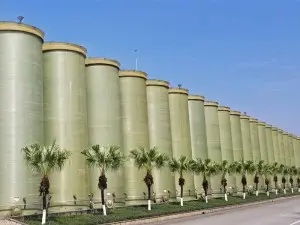
-
 Afrikaans
Afrikaans -
 Albanian
Albanian -
 Amharic
Amharic -
 Arabic
Arabic -
 Armenian
Armenian -
 Azerbaijani
Azerbaijani -
 Basque
Basque -
 Belarusian
Belarusian -
 Bengali
Bengali -
 Bosnian
Bosnian -
 Bulgarian
Bulgarian -
 Catalan
Catalan -
 Cebuano
Cebuano -
 China
China -
 China (Taiwan)
China (Taiwan) -
 Corsican
Corsican -
 Croatian
Croatian -
 Czech
Czech -
 Danish
Danish -
 Dutch
Dutch -
 English
English -
 Esperanto
Esperanto -
 Estonian
Estonian -
 Finnish
Finnish -
 French
French -
 Frisian
Frisian -
 Galician
Galician -
 Georgian
Georgian -
 German
German -
 Greek
Greek -
 Gujarati
Gujarati -
 Haitian Creole
Haitian Creole -
 hausa
hausa -
 hawaiian
hawaiian -
 Hebrew
Hebrew -
 Hindi
Hindi -
 Miao
Miao -
 Hungarian
Hungarian -
 Icelandic
Icelandic -
 igbo
igbo -
 Indonesian
Indonesian -
 irish
irish -
 Italian
Italian -
 Japanese
Japanese -
 Javanese
Javanese -
 Kannada
Kannada -
 kazakh
kazakh -
 Khmer
Khmer -
 Rwandese
Rwandese -
 Korean
Korean -
 Kurdish
Kurdish -
 Kyrgyz
Kyrgyz -
 Lao
Lao -
 Latin
Latin -
 Latvian
Latvian -
 Lithuanian
Lithuanian -
 Luxembourgish
Luxembourgish -
 Macedonian
Macedonian -
 Malgashi
Malgashi -
 Malay
Malay -
 Malayalam
Malayalam -
 Maltese
Maltese -
 Maori
Maori -
 Marathi
Marathi -
 Mongolian
Mongolian -
 Myanmar
Myanmar -
 Nepali
Nepali -
 Norwegian
Norwegian -
 Norwegian
Norwegian -
 Occitan
Occitan -
 Pashto
Pashto -
 Persian
Persian -
 Polish
Polish -
 Portuguese
Portuguese -
 Punjabi
Punjabi -
 Romanian
Romanian -
 Russian
Russian -
 Samoan
Samoan -
 Scottish Gaelic
Scottish Gaelic -
 Serbian
Serbian -
 Sesotho
Sesotho -
 Shona
Shona -
 Sindhi
Sindhi -
 Sinhala
Sinhala -
 Slovak
Slovak -
 Slovenian
Slovenian -
 Somali
Somali -
 Spanish
Spanish -
 Sundanese
Sundanese -
 Swahili
Swahili -
 Swedish
Swedish -
 Tagalog
Tagalog -
 Tajik
Tajik -
 Tamil
Tamil -
 Tatar
Tatar -
 Telugu
Telugu -
 Thai
Thai -
 Turkish
Turkish -
 Turkmen
Turkmen -
 Ukrainian
Ukrainian -
 Urdu
Urdu -
 Uighur
Uighur -
 Uzbek
Uzbek -
 Vietnamese
Vietnamese -
 Welsh
Welsh -
 Bantu
Bantu -
 Yiddish
Yiddish -
 Yoruba
Yoruba -
 Zulu
Zulu
Innovative Solutions for Durable and Lightweight Fiberglass Grating Applications in Various Industries
Understanding Fiberglass Grating A Comprehensive Guide
Fiberglass grating, also known as fiberglass reinforced plastic (FRP) grating, has become an essential material in various industries due to its numerous benefits and applications. This innovative product combines the strength of fiberglass with the lightweight nature of plastic, providing a durable and corrosion-resistant alternative to traditional materials like steel and wood. In this article, we will explore the characteristics, advantages, applications, and maintenance of fiberglass grating.
Characteristics of Fiberglass Grating
Fiberglass grating is made from reinforced polymers, primarily consisting of fiberglass and a resin matrix. This combination results in a strong yet lightweight structure, making it ideal for environments where traditional materials might degrade or fail. Grating is typically available in different styles, including molded and pultruded options, each offering specific benefits that cater to various applications.
Molded fiberglass grating is manufactured through a process of heating and compressing resin and fiberglass strands, resulting in a strong, slip-resistant surface that can support heavy loads. Pultruded grating, on the other hand, is produced by pulling fiberglass through a heated die, which creates a continuous, uniform shape. This process results in a product that boasts a higher strength-to-weight ratio and is often used in applications requiring greater structural integrity.
Advantages of Fiberglass Grating
One of the most significant advantages of fiberglass grating is its exceptional resistance to corrosion. Unlike steel, which can rust and deteriorate when exposed to moisture and chemicals, fiberglass grating maintains its structural integrity even in harsh environments, such as chemical plants, wastewater treatment facilities, and marine applications.
Another benefit is its lightweight nature. Fiberglass grating is significantly lighter than steel, making it easier to handle and install. This characteristic not only reduces labor costs but also minimizes the need for heavy structural supports, ultimately lowering overall project costs. Furthermore, fiberglass grating is available in various colors and styles, allowing for flexibility in design and aesthetics.
fiberglass grating

Safety is another critical factor that fiberglass grating excels in. Many types of fiberglass grating feature a slip-resistant surface, which helps prevent slips and falls in workplaces where wet or oily conditions are common. This safety feature makes it suitable for use in industries such as food processing, pharmaceuticals, and oil and gas production, where worker safety is paramount.
Applications of Fiberglass Grating
Due to its versatility, fiberglass grating is widely used in several industries. In the chemical industry, it provides platforms, walkways, and stair treads that are resistant to corrosive chemicals. In the construction sector, it is often used for drainage covers and supports, thanks to its strength and durability. Marine applications benefit from fiberglass grating's resistance to salt water and UV radiation, making it ideal for docks, piers, and boat ramps.
Moreover, fiberglass grating is increasingly being used in recreational facilities, including pools and amusement parks, due to its slip resistance and comfort underfoot. In addition, it finds applications in mining and oil and gas industries, where strength, safety, and longevity are critical.
Maintenance of Fiberglass Grating
Maintaining fiberglass grating is relatively straightforward. Regular cleaning to remove dirt and debris is essential to preserve its slip-resistant surface and ensure longevity. Unlike metal grating, it does not require painting or rust-proofing, making it a low-maintenance option for busy facilities.
In conclusion, fiberglass grating offers a multitude of benefits that make it a preferred choice across various industries. Its corrosion resistance, lightweight nature, safety features, and versatility in application make it an ideal material for modern construction and industrial projects. As industries continue to seek durable and cost-effective solutions, fiberglass grating will undoubtedly play a significant role in the future of structural support systems.









